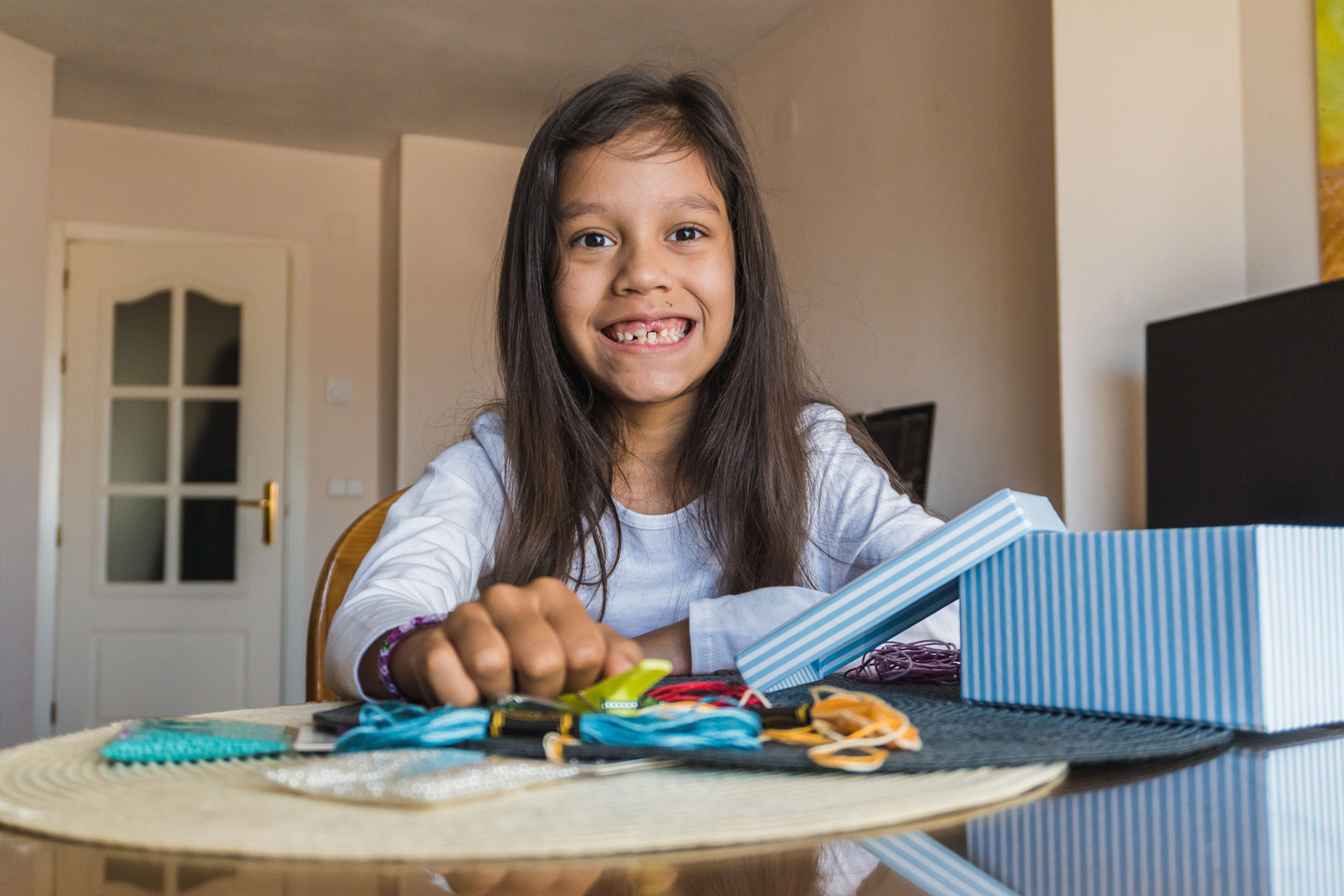 My Cart0
My Cart0

How Does Autism Impact Emotional Development?
Emotional development is a fundamental aspect of human growth, influencing how we understand, express, and regulate our feelings. However, children with autism often process emotions differently, which can present unique challenges as they navigate social and personal experiences. Therefore, understanding how they experience emotions is key to providing the right support and fostering emotional well-being.
Emotional Development in Typical Development
Emotional development is an important part of one’s development, shaping how individuals interact with the world around them. In typical development, children progress through key emotional milestones that help them recognise, understand, and regulate their emotions.
Some of these key milestones include the following:
1. Recognising Basic Emotions
From infancy, babies begin to recognise and respond to basic emotions like happiness, sadness, and anger. By observing caregivers, they start forming an understanding of facial expressions and vocal tones associated with different feelings.
2. Developing Empathy
As children grow, they learn to recognise emotions in others and respond accordingly. By the preschool years, many children demonstrate empathy and understanding that others have thoughts and feelings that are different from their own.
3. Using Language to Express Feelings
Language plays a key role in emotional expression. As their vocabulary expands, children gain the ability to describe their feelings and seek comfort or assistance when needed.
4. Building Self-Regulation Skills
By early childhood, children start developing self-regulation strategies to manage their emotions. These skills, such as calming themselves after distress or adapting to new situations, play a crucial role in emotional well-being and social interactions.
Autism’s Influence on Emotional Experiences
For individuals with autism, emotional development follows a different trajectory. Autism can affect emotional processing in several ways, influencing how emotions are recognised, experienced, and regulated. These differences could potentially lead to issues with social interactions, communication, and overall well-being.
Some of the reasons why those with autism may struggle with emotions include:
1. Difficulties in Recognising and Understanding Emotions
Many individuals with autism may struggle with identifying emotions in themselves and others, a condition known as alexithymia.
Research shows that alexithymia affects a number of individuals with autism. Those with alexithymia may have difficulty distinguishing between different emotions, understanding their causes, or recognising facial expressions and social cues. This can sometimes lead to a sense of emotional detachment or difficulty connecting with others.
2. Heightened Emotional Reactions and Meltdowns
Conversely, some individuals with autism experience emotions with heightened intensity, leading to meltdowns—overwhelming emotional reactions that manifest as intense distress or anger. Meltdowns often occur when an individual struggles to adapt to changes in routine or faces difficulties in communication.
While they may seem like tantrums, they are entirely different. Temper tantrums happen when a child expresses dissatisfaction for not getting what they want or need. On the other hand, meltdowns occur because of sensory overload, and children with autism often may find it difficult to control them.
Emotional Dysregulation in Autism
Emotional dysregulation refers to difficulties in managing and controlling emotional responses. In autism, this often manifests as challenges in coping with frustration, anxiety, and sensory overload.
Due to difficulties in recognising, expressing, or processing emotions, individuals with autism may struggle with emotional regulation, which can impact their social interactions and daily functioning.
Understanding the Why: Emotional Processing Differences in Autism
For caregivers of children with autism, it’s essential to understand that emotional processing can occur at a different pace. Some children may experience delayed emotional reactions, while others may have intense and immediate responses to emotional stimuli.
Because individuals with autism experience, communicate and express emotions differently, they may sometimes struggle to empathise with neurotypical individuals—and vice versa. This dynamic is described in Dr. Damian Milton’s “Double Empathy Problem” theory, which suggests that communication challenges between those with autism and neurotypical individuals stem from mutual misunderstandings rather than a lack of empathy on either side. Differences in how emotions are perceived and expressed contribute to this gap, often making social interactions more complex.
As caregivers, bridging this gap is key to supporting your child’s emotional growth. By fostering understanding, patience, and tailored communication strategies, you can help create a more inclusive and supportive environment for their emotional development.
Therapeutic Approaches to Support Emotional Development
These therapeutic approaches aim to provide children with autism the tools and strategies to navigate emotions, build social connections, and improve overall well-being
1. Play Therapy
Play therapy leverages the natural language of children – play – to address emotional and social challenges. A prominent example is Floortime, which emphasises following the child’s lead in play to build connections and foster emotional growth.
How it works: The therapist engages with the child in their chosen play activities, creating opportunities for interaction, communication, and emotional expression. These activities can involve anything from playing with toys to imaginative scenarios.
Benefits of play therapy:
- It allows children with autism to identify and understand their own emotions and those of others.
- Children with autism can develop social skills like turn-taking, sharing, and cooperation.
- They will learn to express emotions in a safe and supportive environment.
- Play therapy can help children with autism build stronger relationships with caregivers and peers.
2. Occupational Therapy
Occupational therapy focuses on improving the child’s ability to participate in daily activities. For children with autism, this often includes addressing sensory sensitivities and developing emotional regulation skills.
How it works: Occupational therapy uses various techniques, including sensory integration therapy, to help children process sensory input in a way that’s suitable for them. This can involve activities that provide specific sensory experiences like swinging, using weighted blankets to help regulate the nervous system.
Benefits of occupational therapy:
- Children with autism learn how to manage sensory overload, which can trigger emotional meltdowns.
- They develop self-regulation strategies to cope with challenging emotions.
- This can also improve fine motor skills and coordination in children with autism.
- Children with autism can learn how to perform activities of daily living (ADLs) independently, which can potentially boost their self-esteem.
3. Speech Therapy
Speech therapy addresses communication challenges, which are often present in autism. With speech therapy, children with autism learn strategies for effective communication, enabling them to convey their emotions productively and build social connections.
How it works: Speech therapists work on various aspects of communication, including expressive language (how we communicate our thoughts and feelings), receptive language (how we understand others), and social communication (pragmatics).
Benefits of speech therapy:
- Children with autism can develop verbal and non-verbal communication skills.
- They improve their understanding of social cues and body language.
- Speech therapy helps them enhance their ability to express emotions and needs effectively.
4. Cognitive Behavioural Therapy (CBT)
CBT is a type of therapy that focuses on the connection between thoughts, feelings, and behaviours. It’s an evidence-based approach to improving emotional regulation.
How it works: CBT helps individuals identify and challenge negative or unhelpful thought patterns that contribute to emotional difficulties. It teaches coping strategies for managing challenging emotions.
Benefits of CBT:
- Children with autism learn and understand the link between thoughts and feelings.
- Through CBT, they can learn coping mechanisms for managing anxiety, anger, and other challenging emotions.
- They learn strategies that could help in managing the intensity and frequency of emotional outbursts.
5. Mindfulness
Mindfulness practices involve paying attention to the present moment without judgment. These methods can be beneficial for individuals with autism in managing emotions and reducing stress.
How it works: Mindfulness techniques, such as deep breathing exercises, meditation, and body scans, help individuals become more aware of their internal experiences, including emotions.
Benefits of mindfulness:
- This technique helps children with autism learn awareness of emotional states.
- Children with autism develop the ability to observe emotions without being overwhelmed by them.
- Mindfulness could potentially help with stress and anxiety management.
- Through mindfulness strategies, children with autism could develop their emotional regulation skills.
The Importance of Early Intervention
By introducing structured interventions at a young age, children can gradually learn coping strategies that enhance their communication and social interactions, reducing frustration and behavioural challenges. These programmes also help children with autism build a stronger emotional foundation, setting them up for greater independence and improved well-being in the long run.
Early intervention centres in Singapore, like Exploring Mates, offer programmes designed to help children with autism navigate emotional processing and expression. We provide structured guidance through evidence-based strategies to teach emotional awareness and self-regulation.
Additionally, our professionals can support parents and caregivers by equipping them with the knowledge and skills needed to understand and respond to their child’s unique emotional needs. By fostering a collaborative approach, early intervention not only benefits the child but also strengthens the support system around them, creating a more nurturing and understanding environment.








